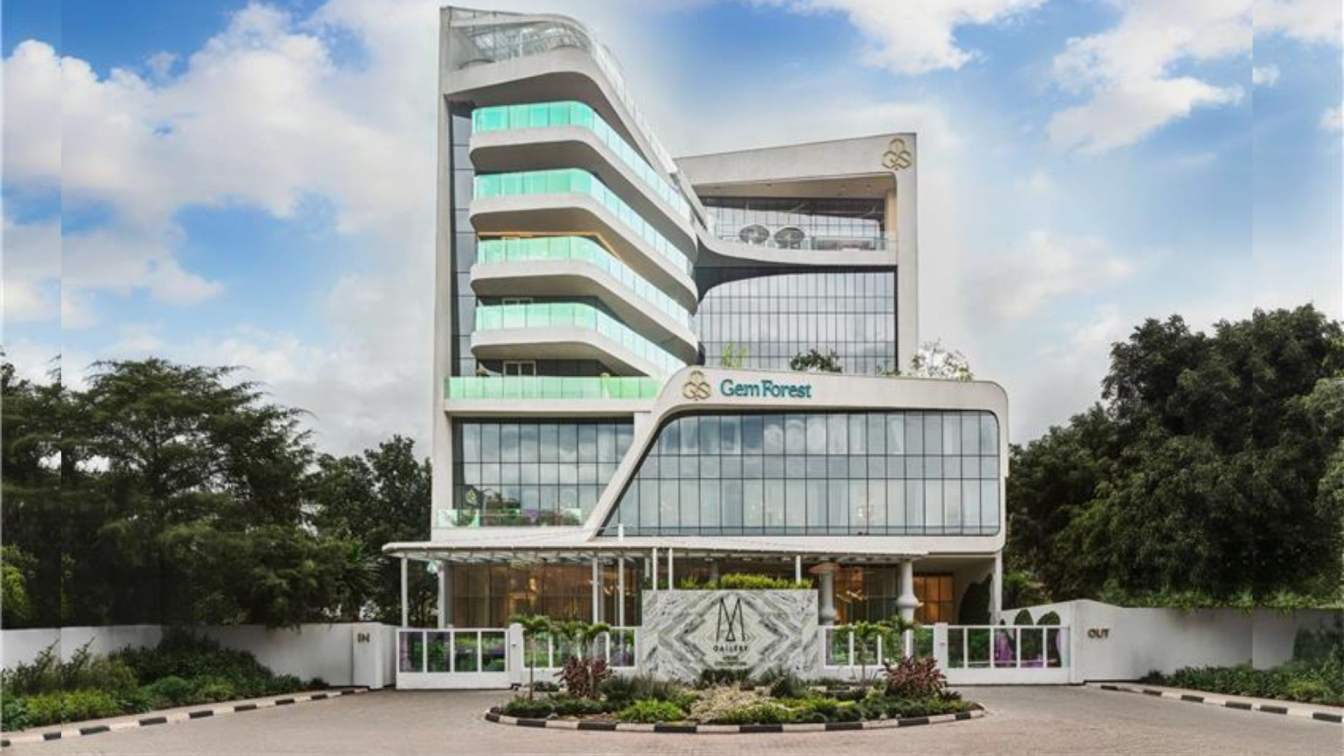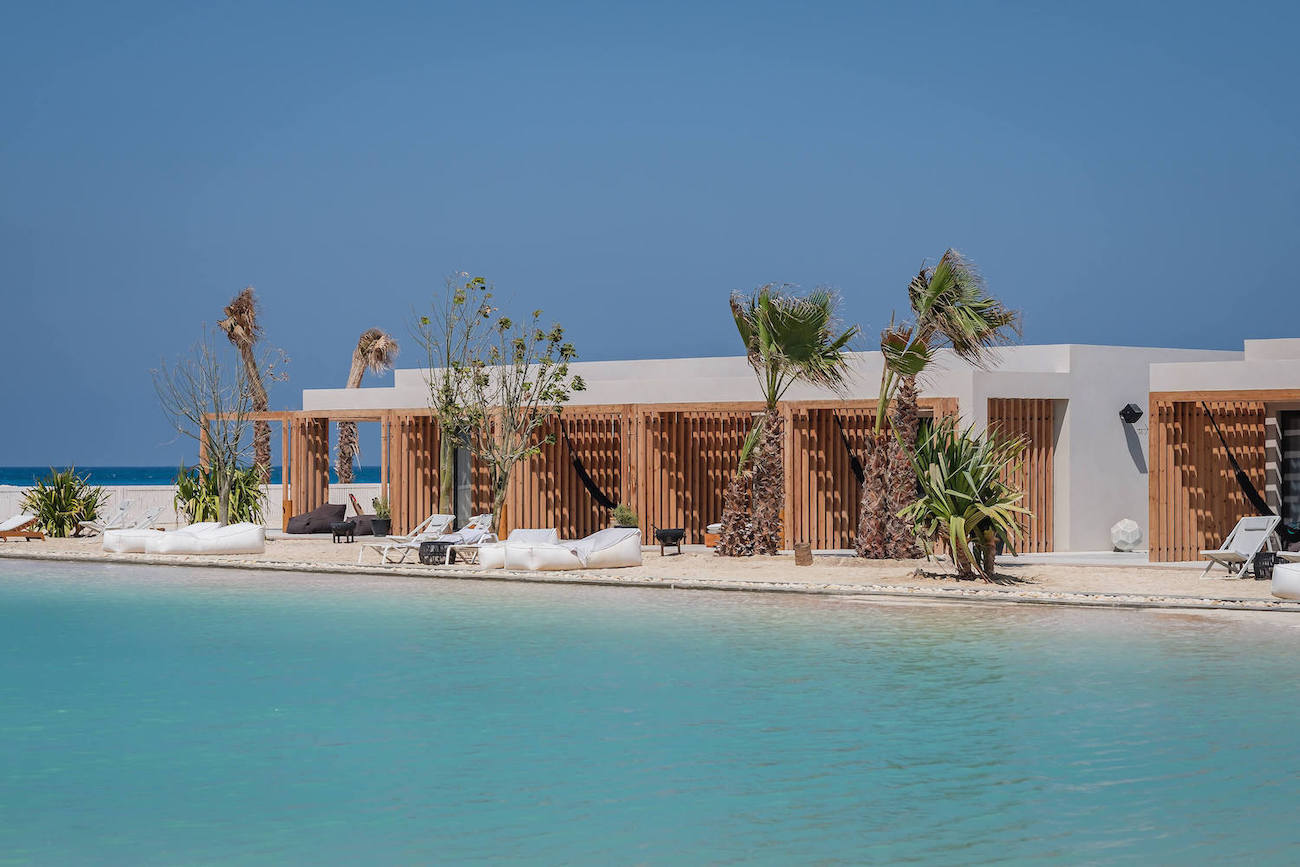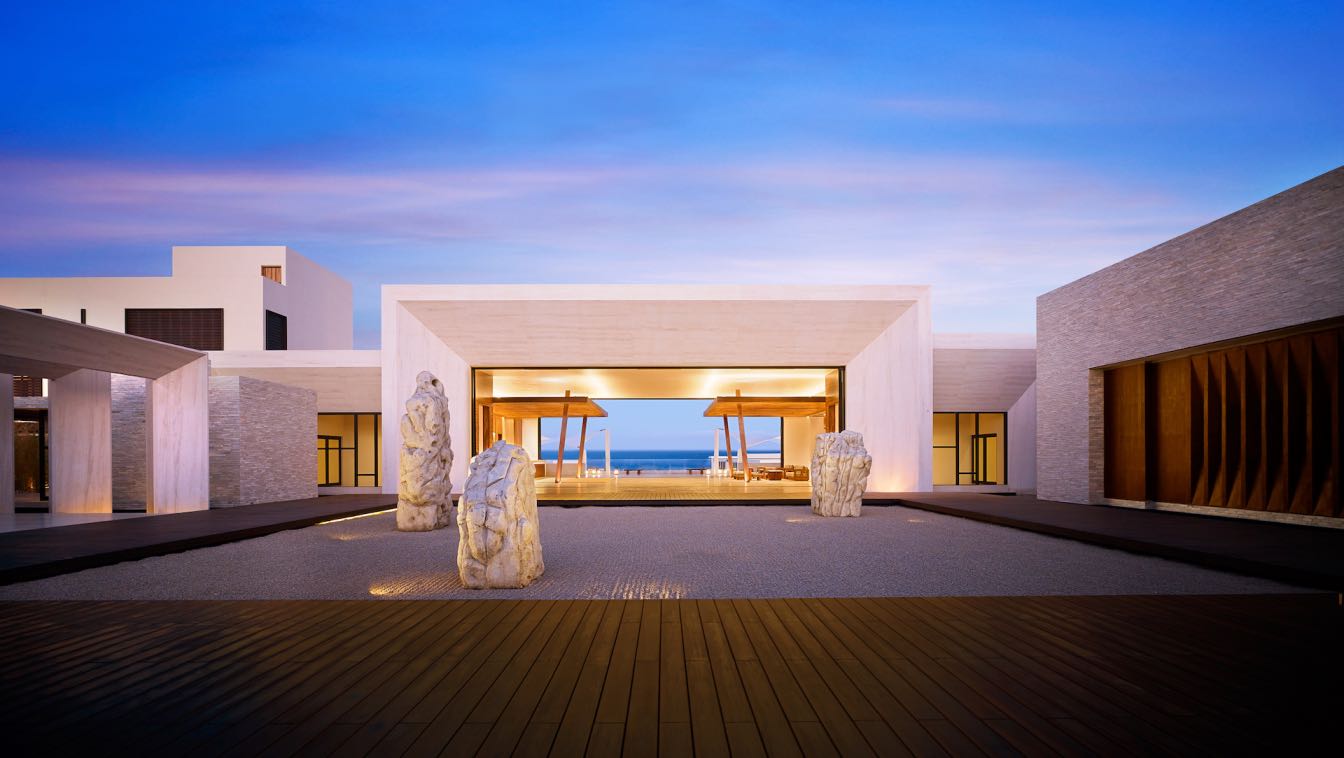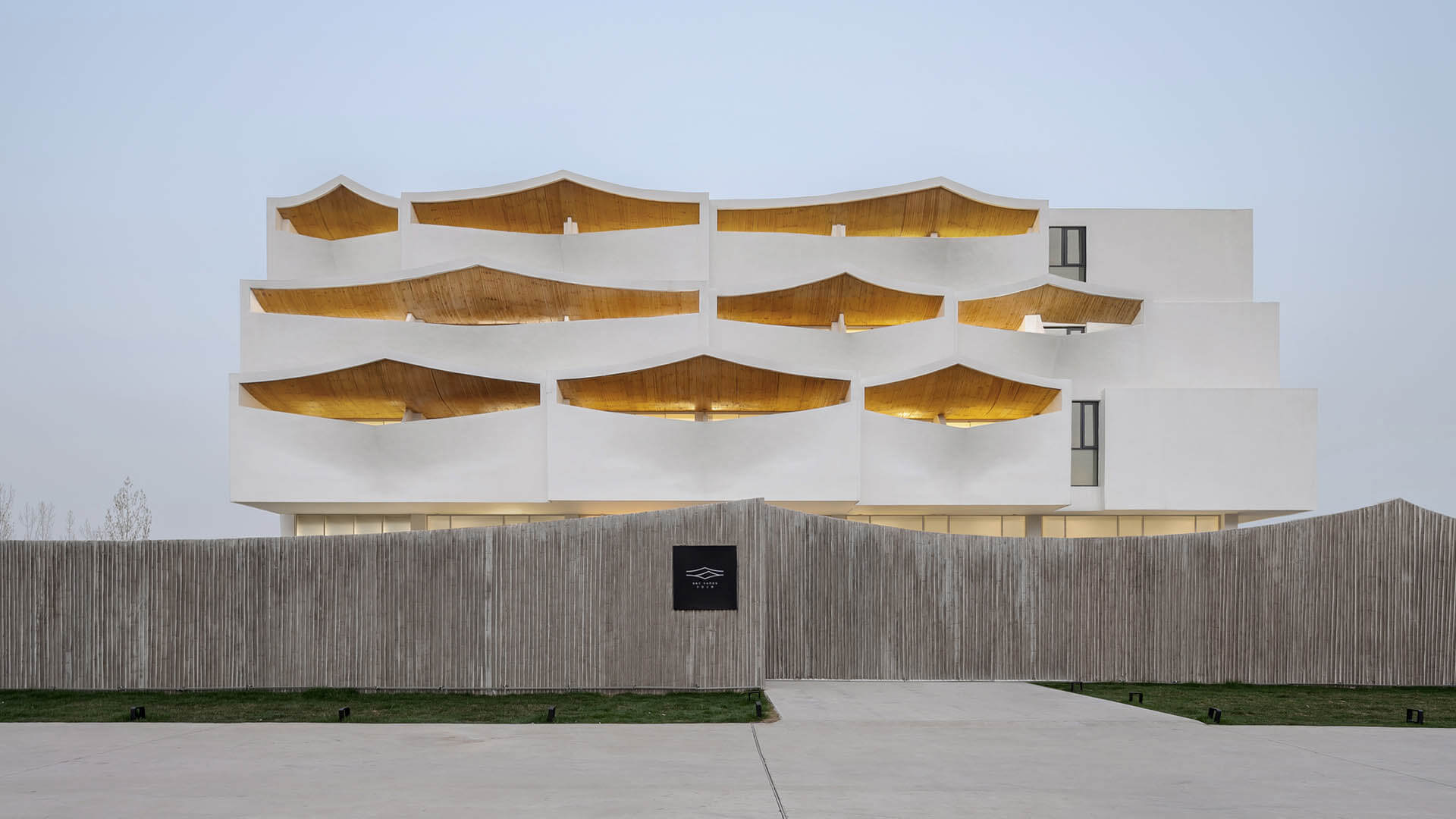In Nairobi’s diplomatic quarter, just a short walk from Karura Forest, a new boutique hotel quietly redefines what it means to blend architecture with nature. Designed by S+S (Sundukovy Sisters) Design & Architecture Studio, the recently opened MGallery GemForest Hotel is a 2,383 m² property where structure, interior, and landscape interact in subtle, well-calibrated ways.
From the outset, the project took cues from its context — both natural and cultural. Nairobi, whose name in Maasai means “cool water,” became a guiding metaphor. Streams and vegetation from nearby Karura inspired the design language, while the hotel owner’s background in the gemstone business added another conceptual layer. The result is a crystalline, asymmetrical building that seems to emerge naturally from the forest.
Forest inside the glass
The hotel’s glass-clad entrance opens into a lobby where faceted forms and translucent textures evoke cut stones set against a neutral canvas. Light becomes a central narrative element: filtered through glass walls treated with dichroic film, it refracts across surfaces, shifting with the time of day. This visual play continues in the central atrium, where tall banana trees grow between shallow pools under a skylight. In good weather, glass partitions open to let in the breeze.
Materials are tactile, yet polished. Reception and bar counters are made from glass bricks with mirrored surfaces, while upholstered furniture in gemstone tones adds warmth and comfort to the otherwise minimal palette. These contrasts — raw and refined, geometric and organic — define the atmosphere.

Guest rooms: subtle drama, soft light
In the guest rooms, the design language becomes quieter. Walls remain light, allowing colour and light effects to take center stage. Prisms and spotlights behind headboards project soft, shifting reflections, while the bathroom’s semi-transparent glass wall filters light while maintaining privacy. A coloured stripe of glass subtly references the visual codes of the public areas, quietly echoing the overarching design theme.
Designed for context and construction
Designing a five-star hotel remotely always brings challenges. Construction in Nairobi began while the design process was still underway, requiring a flexible, adaptive approach from the S+S team. Most furnishings were sourced or produced locally, making the process both cost-effective and sustainable.
Importantly, the interiors nod to African aesthetics without resorting to clichés. References are embedded in textures, materials, and forms — like fringed fabric, metal details, and custom artworks — rather than in overt themes. The goal was to reflect the place, not imitate it.
A hotel for many functions
Alongside its hospitality role, the hotel was designed with multifunctionality in mind. Located near the UN Africa headquarters and several embassies, it includes well-equipped conference spaces and a variety of F&B zones catering to international tastes. During the day, the pool area invites guests to relax — even offering submerged lounge chairs. At night, it transforms into an atmospheric event space, framed by illuminated greenery and water that captures and reflects light in unexpected ways.
MGallery GemForest Hotel balances clarity and complexity, offering a guest experience deeply rooted in light, material, and context.

























